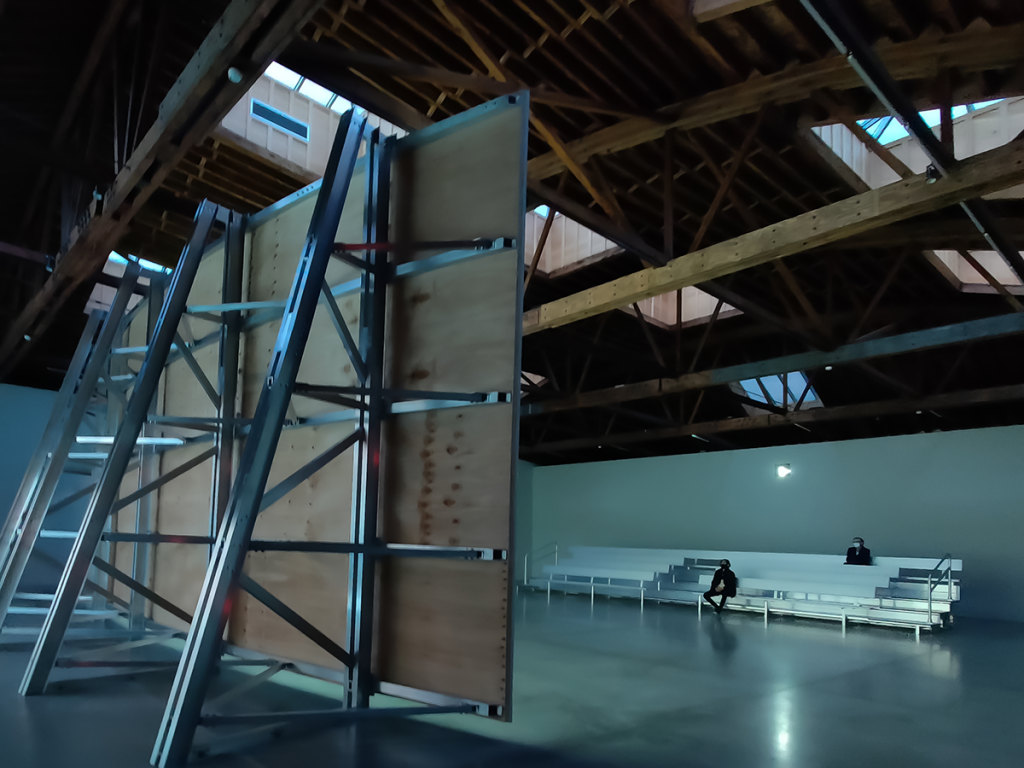On Friday, I went to the Dia Chelsea art gallery to see the new exhibition of Lucy Raven. Raven was born in Arizona. She demonstrates, in her work, the tough cut between nature and human industry. The exhibit includes two rooms. The first room consists of 4 spotlights that move slowly in a pattern, creating different circles by hitting close or distant points on the floor or walls. If there are people in the room, their shadows become part of the art. I hung there for a while and continued to the second room.

The large barn-like room with a huge, curved screen broadcasting a 45-minute black and white film called Ready Mix. I sat down on the white bleachers in front of the screen that showed the last shot: a tractor placing a block in a wall made with enormous blocks. All other people in the room left, and I had the privilege to watch the peace by myself. The first shot duration was extremely long. A one-shot showing a close-up of the rolling part of a concrete truck, the audience cannot identify the moving object until the next shot, where it arrives at its destination. I sat patiently, trying to understand the connection between every shot and the ending shot I saw when I got there. The reason for every frame was not very clear at first. The meaning of the frames is only understandable when viewing the entire piece.
The opening introduces us to the concern of the movie. The film shows the industrial process of producing concrete. Through top long shots filmed with drowns and surprising close-ups of machines’ insides, we observe the workings of an Idaho concrete plant from an experimental point of view. Raven captures the desert of Idaho in a realistic, non-conservative way. For example, a shot presents the high hills of the desert with a tilt down to an earth-moving tractor that loads sand and rocks in its spoon. This shot reflects the essence of construction. Man takes over nature and uses it to its needs. We do not see a peaceful dessert. We see a tractor working like a tired ant, which moves sand in a massive pile of sand.

The film is constructed mainly with one-shots of a repetitive motion. One of them, for example, is the earth-moving tractor taking in a long top shot, loading a big pail of (what looks like) dirt, driving for a while, and unloading it on another pile of soil in a different shade. Although we see it do the action only one time, In the frame, we see countless trails in the sand, suggesting it is doing the same thing for a very long time. Another example of repetition is in a long one-shot of small stones on a conveyor with water, a move that makes them round and shiny. Watching the recurrence of the same movement for so long (a few minutes every time) creates the feeling of Semantic satiation. It’s the same weird feeling one gets when they repeat the same word over and over, and it starts to sound weird. The shot temporarily loses its simple meaning and you start to doubt what is projected on the screen.
By Noga Harel